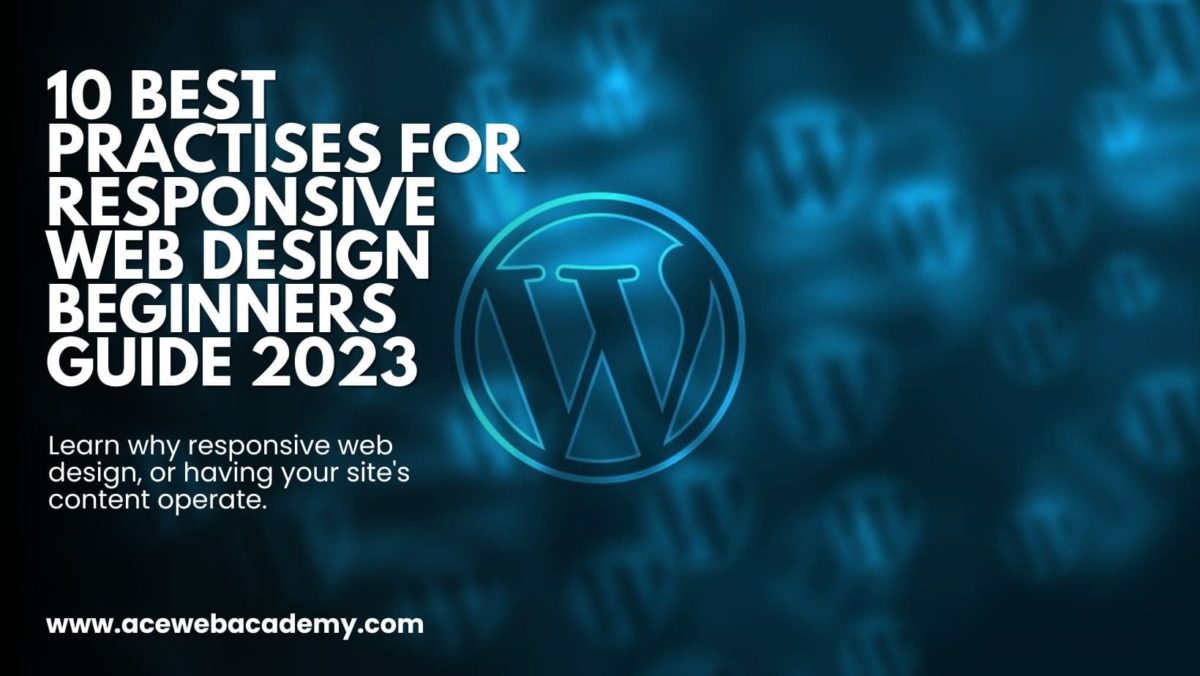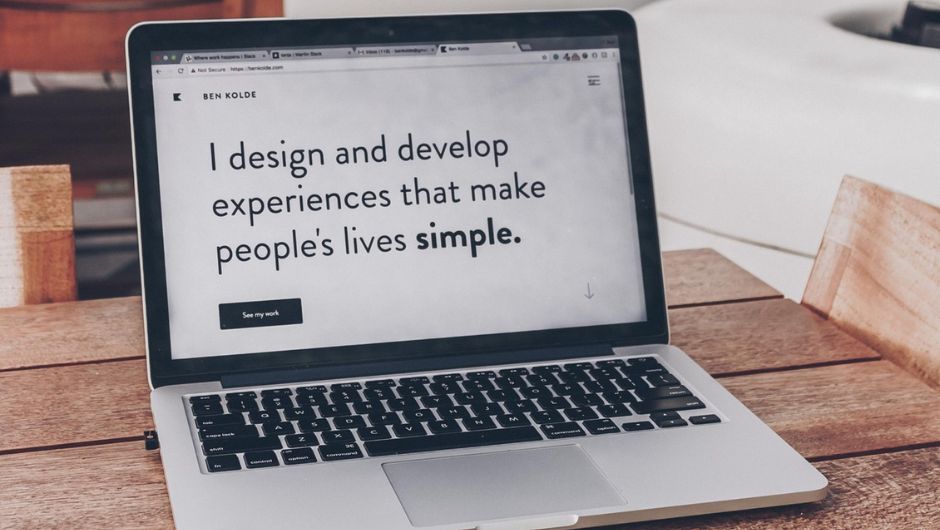-
Class Room Training
Hyderabad
-
Online Training
Join From Anywhere
-
Class Room Training
Hyderabad
-
Online Training
Join From Anywhere
Our Blog
10 Best Practises for Responsive Web Design Beginners Guide 2023

Table of Content:
What exactly is Responsive Web design?
Why is it important to have responsive Web design?
Who can Start designing websites?
10 of the best ways to make a Responsive Web Design
What are the different types of web design and what do they do?
What exactly is Responsive Web design?
Responsive Web design is a way to build a website that changes the size of your site’s content to fit the screens and windows of different devices.
Because desktop screens are big enough to handle this kind of layout, your information can be split into many sections.
If you divide your content into many columns on a mobile device, it will be hard for people to read and connect with it.
With responsive design, you can send different versions of your design and information to different devices based on the size of their screens.
Why is it important to have responsive Web design?

If you’re new to blogging, web design, or development, you might wonder why responsive design is even important.
The answer is easy to figure out. No longer is it enough to design for a single device. More than 51% of all website traffic now comes from mobile devices, which is more than from computers.
When more than half of your possible visitors use a mobile device to browse the web, you can’t just give them a page made for a desktop computer. It would be hard to understand and use, which would be bad for the person.
But that’s not the end. Most people who use search engines do so on their phones.
In the last few years, mobile has become one of the most important ways to advertise. Even though there was a pandemic, spending on mobile ads has gone up 4.8% to $91.52 billion.
No matter if you promote on social media or use an organic method like YouTube SEO, most of your traffic will come from mobile users.
If your landing pages aren’t easy to use and set up for mobile devices, you won’t be able to get the most out of your marketing. When conversion rates are low, you get fewer leads and waste money on promotion.
Who can Start designing websites?
To start Web Designing, you need both the technical skills to make websites that work and the artistic talent and design sense to make an experience that people will like.
A Web Designer is someone who is both creative and good with computers.
10 of the best ways to make a Responsive Web Design

1) Being adaptable
Flexibility is a must for mobile website design. Images, text blocks, layouts, and other parts must all be adaptable.
2) Responsive Pictures
For mobile-friendly design, images that respond to size and cropping are important. Some photos may need to be cropped so that they look good on smaller screens. For example, making squares out of outdoor photos for mobile devices.
3) Use SVGs, or Scalar Vector Graphics.
Icons and logos should be made with SVGs instead of raster images. SVGs, unlike raster graphics, change their scale based on image pathways instead of pixels, so they look the same no matter what size they are.
4) Know where you can break.
Each online page should have at least three different breakpoints for mobile, tablet, and desktop. As was already said, five breakpoints are recommended for maximum gadget adaptability. Designers may need to compare how websites work on iOS and Android smartphones from time to time.
5) Think about how cards work.
You could save a lot of time by putting mobile-friendly information in card UI patterns. You can use UXPin’s Auto Layout to scale, fit, and fill designs to make cards and other components more flexible. Auto-layout in UXPin that is built on flexbox makes it easy for engineers to copy and paste CSS when passing off designs.
6) Minimalism Is Key
Here are three reasons why minimalism is such an important best practise for adaptable web design.
- Cutting down on the amount of content makes it easier to read and understand.
- A user interface design that is simple makes it easier to keep things the same on a variety of devices and screen sizes.
- Web sites with less text, HTML, CSS, and Javascript load faster. This gives visitors a better experience and helps SEO.
7) Methodology for Mobile-First Design
In order to build for mobile first, you have to start with the smallest screen size and work your way up to the largest viewport. As designers work their way down from the largest screen, they normally have to cut features or make other changes.
Find out more about this approach in our free eBook, Responsive & Adaptive Web Design, which looks at Facebook, Hulu, and nine other well-known companies.
8) Sort and hide content in the right way:
When designing for smaller screens, designers must decide which content should always be available and which can be hidden. The most common way to show an image on a mobile device is to use a navigation drawer.
Designers can also use progressive disclosure to hide content and information that isn’t necessary in order to make the user experience cleaner and easier to use on all devices and screen sizes.
9) Lots of places to click on buttons
Fitts’ Law, which is explained in Involvement Design Best Practises: Book I, says that buttons with large usable areas make it easier for users to get involved. Designers must also leave enough room between links and buttons so that people don’t click on the wrong one by accident, which can be painful.
10) Look into your competitors and the leaders in your field.
One of the best ways to learn about and keep up with the latest changes in responsive web design is to look at your competitors and the stars in your field. If you’re making an eCommerce site, think about how well-known brands like Nike, Asos, H&M, and others build their stores.
Why not use the millions of dollars that these companies spend to study and test best practices?
What are the different types of web design and what do they do?

Websites Here are some examples of website ideas and the best ways to use them:
Single page
Single-page designs show all information on one page. The page can be as long as the designer wants, and users can scroll down to see everything. When putting together information for visitors, many businesses and groups use a linear story.
Its form is flexible because it has many uses. It can be used to advertise things or show off the work of artists.
Static Websites
Static websites aren’t engaging and look the same on all devices. Most websites are made with HTML or CSS and have a set number of pages, which keeps costs down. Static websites are meant to give information instead of selling goods and services.
Dynamic site
Sites that are dynamic let users interact with the information, which makes them more interesting. Most of these websites need code in JavaScript, PHP, or ASP. Because the model and style of dynamic websites are more complicated, they cost more and take longer to load. But interesting displays can help show what’s good about a product or service.
Responsive design
A flexible website shows information based on the size of the browser. By wrapping text and resizing images, the website can fit the most important information on any size screen. This style makes it easier for many websites and organisations to make information and things easy to find on a variety of devices.
Liquid design
In contrast to a responsive design, a liquid design doesn’t change the style of the page based on the size of the screen. For websites that don’t want to change their content based on the size of the browser window, the design shrinks or spreads the whole page to fit. But if you look at the design on a screen that is too small or too big, the word may be very small or twisted.
Fixed design
With a set design, web designers can make a website that looks the same no matter what size the window or screen is. On both phones and computers, the site starts at the same size. The tight resolution helps web designers make websites that look the same on all devices. People with smaller screens may find it harder to search and find the information they need.
Conclusion:
In the digital age we live in now, it’s important to have high performance web design to serve the growing number of mobile users and give people the same experience on all devices.
By using authentic practices and designs, businesses can reach more people, keep customers interested, and stay ahead of the competition. To make your website more appealing and interesting, craft it to be more flexible, easy to use, and mobile-friendly.
Categories
Copyright 2025 © acewebacademy.com. All Rights Reserved. A division of Infasta Soft Solutions Pvt. Ltd.



